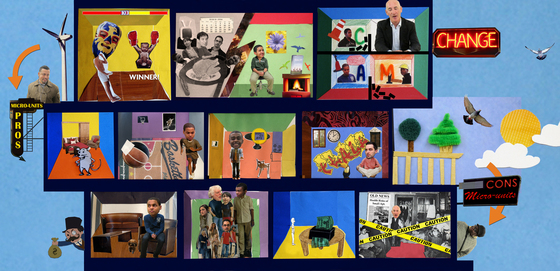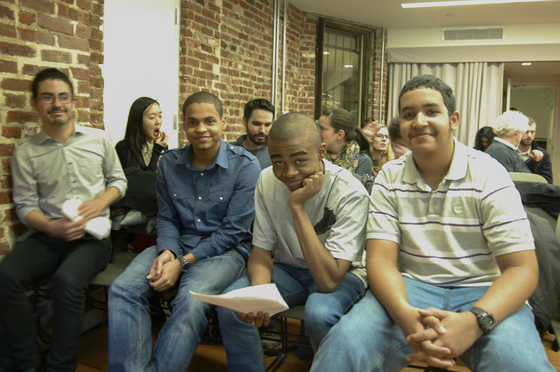- Thursday, April 4, 2013, 7pm
- Tenement Museum
103 Orchard St, 2nd fl
New York, NY
F/J/M/Z to Delancey-Essex St, B/D to Grand St
Debut of “The Big Squeeze”

From the days of Tammany to the era of TiVo, New Yorkers always had to make do with cramped living conditions. Many see micro-apartments as a way to fix to New York's housing crunch. However, others worry that these snug accommodations serve only a narrow group. Who's left out of the conversation? And how much space do you really need to live?
Hot on the heels of the City's adAPT apartment competition CUP teaching artist Chat Travieso worked with a group of public high school students from Bushwick's Academy of Urban Planning to investigate the fad and fascination with tiny modular living spaces. The students asked urban planners about regulatory hurdles, architects about prefabricated units, and developers about funding. They also talked to community advocates about what groups are privileged in the race for newer smaller housing stock. The crew took what they learned and created a poster to teach others about the past, present, and future of apartments in New York City.
On April 4th, 2013 the group presented their project at the Lower East Side Tenement Museum; they discussed their investigative process and led a panel discussion on the future of housing with Seema Agnani, Executive Director of Chhaya CDC, an organization that works with homeowners and tenants to streamline the ‘legalization’ process for illegally converted dwellings and other types of informal housing; and Andrew Reicher, Executive Director of the the Urban Homesteading Assistance Board, a 35-year old nonprofit that helps create and support cooperative and affordable housing.
This public presentation of The Big Squeeze is a People & Buildings event.
The Big Squeeze was made possible with public funds from The New York State Council on the Arts with the support of Governor Andrew Cuomo and the New York State Legislature; and the New York City Department of Culture in partnership with the City Council.

























